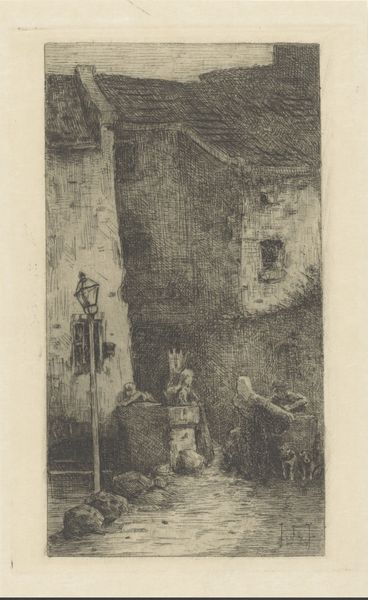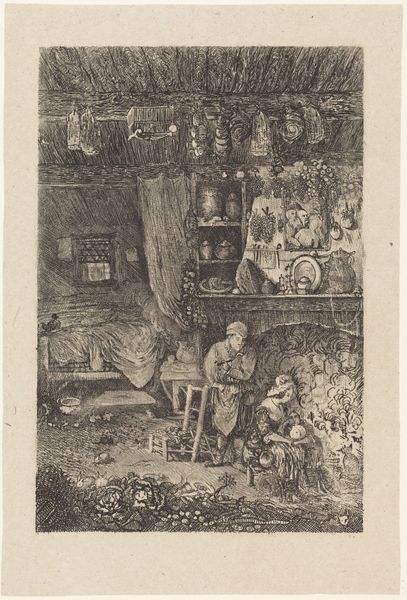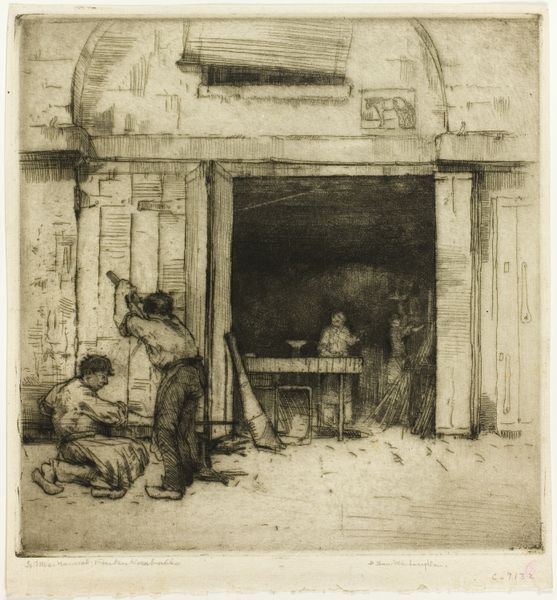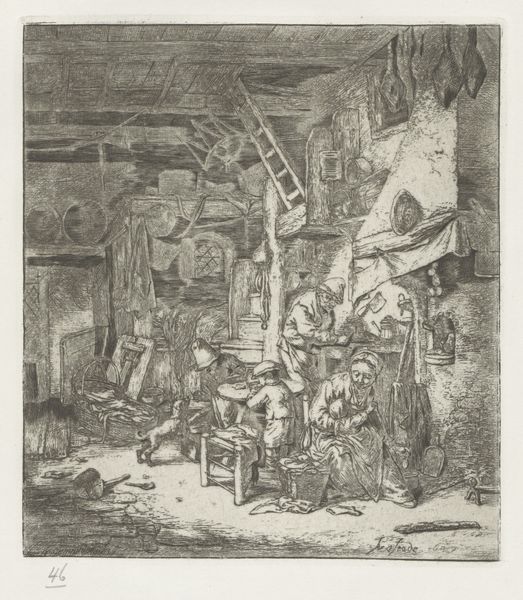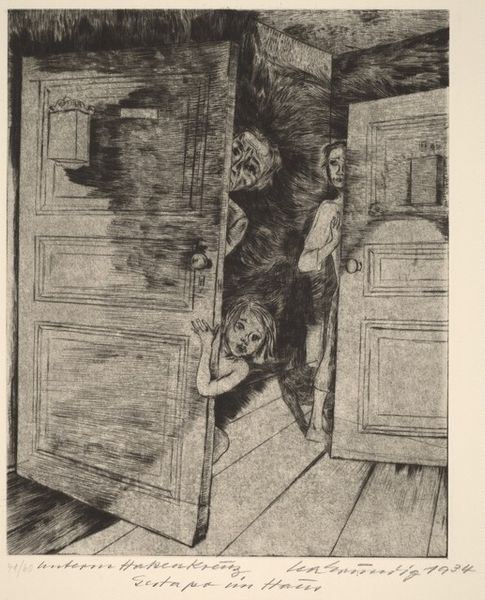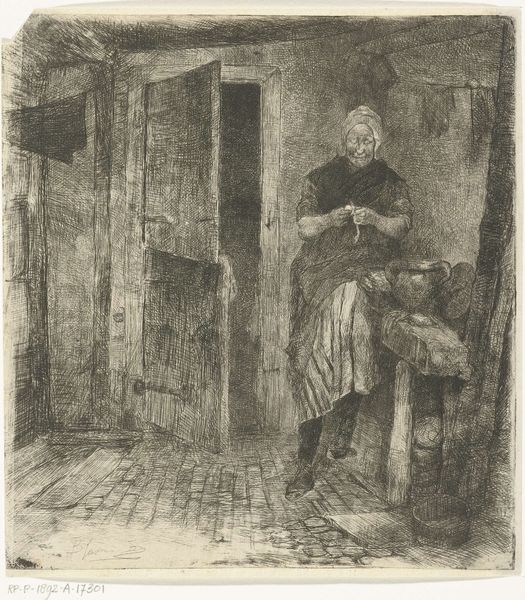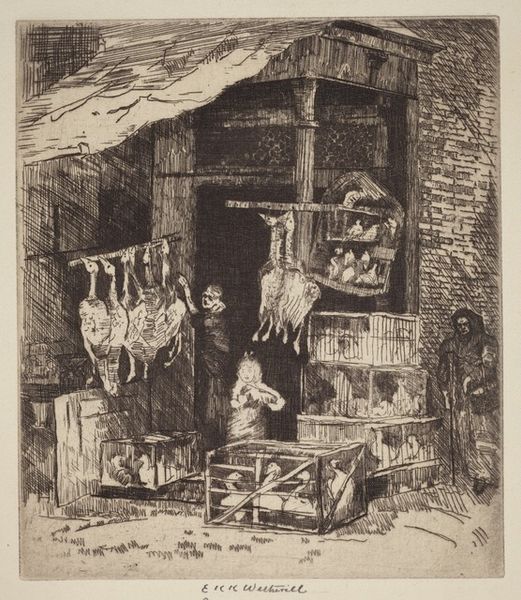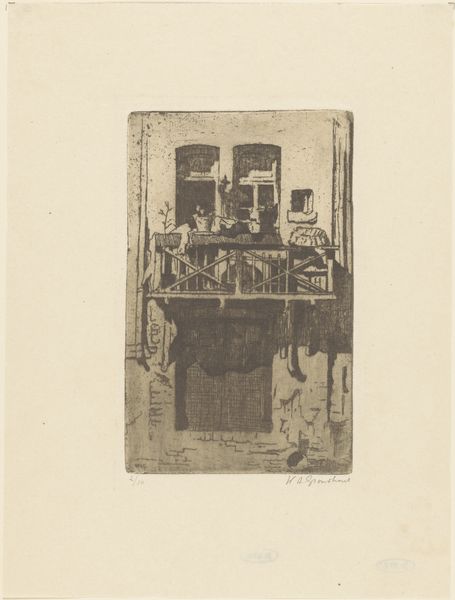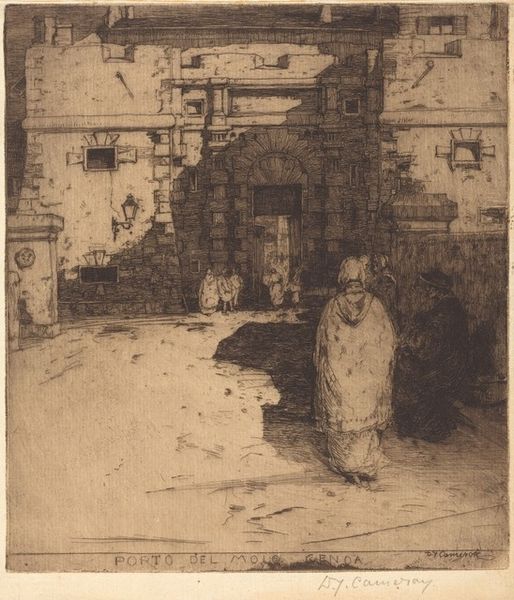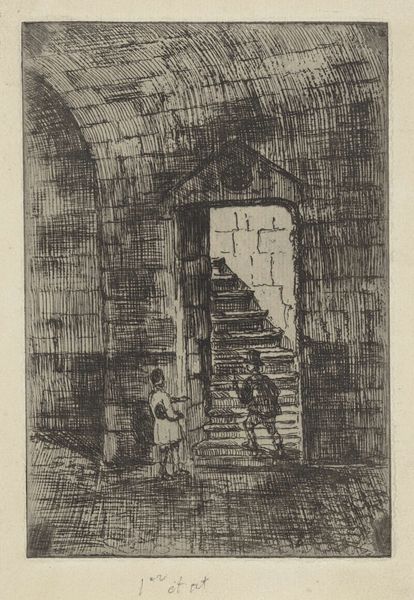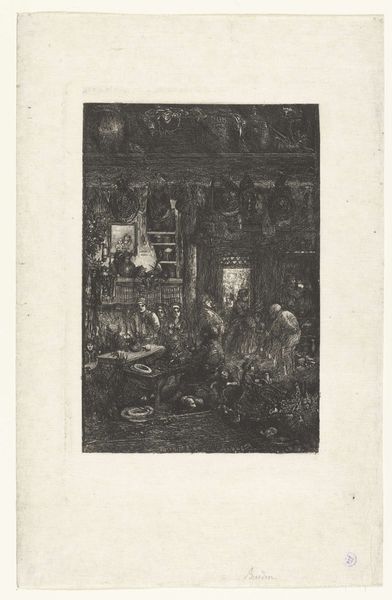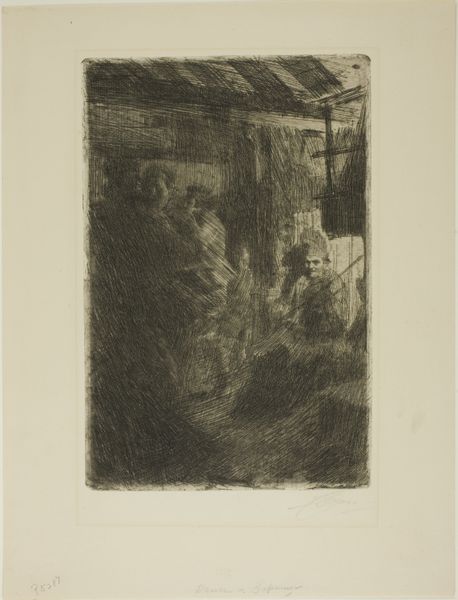
drawing, print, etching, paper
#
drawing
# print
#
etching
#
landscape
#
charcoal drawing
#
paper
#
genre-painting
Dimensions: 237 × 222 mm (image/plate); 238 × 222 mm (sheet)
Copyright: Public Domain
Curator: Looking at this etching, titled "Interior of a Coal Shop," made around 1900 by Donald Shaw MacLaughlan and housed at the Art Institute of Chicago, I am struck by its somber atmosphere. Editor: Immediately, the density of the scene grabs me. The weight of all those sacks of coal, rendered in such stark black and white, is quite powerful. The visible texture created through the etching process contributes a tangible sense of the physical labor inherent to this work. Curator: Absolutely. Consider how MacLaughlan positions this scene within a broader history of representing labor. Genre paintings often depicted romanticized views of work, whereas this provides a much more realistic depiction, acknowledging the grim realities faced by the working class at the turn of the century. How might we read this scene in terms of class and gender, especially considering the women and children present? Editor: We can't ignore the material reality of coal mining, which fueled industrial society at the cost of countless lives. The dark, almost claustrophobic space depicted points to harsh conditions, even in its sale. The sacks become stand-ins for extracted and traded resources – each representing hours of intensive labor, connecting people in a market and supply chain. This etching method—with its darks—brings us straight to the coalface itself, doesn’t it? Curator: It really does. And that detail allows us to discuss how spaces of commerce like this shop shape and perpetuate gendered divisions of labor. Perhaps the women depicted worked behind the scenes managing household coal provisions, while men handled the supply chain from the mine. Also, notice the print hung to the side? It points to aspirations and narratives contrasting to the reality depicted. Editor: And considering MacLaughlan's own background, making art about the coal trade engages him within this social fabric, as both observer and participant in the larger economic systems. The fact it's a print also hints at an impulse to reproduce and distribute these images, potentially opening access and discourse about this subject. Curator: So this artwork reminds us of art's capacity not only to reflect the social hierarchies and struggles but to ask probing questions about what it means to engage and exist within a space like this coal shop, too. Editor: Indeed. Through examining the medium, labor, and trade here, MacLaughlan inadvertently connects art with the energy needed for broader society. I come away seeing beyond genre-painting and landscape: here, it is commodity-landscape, indeed.
Comments
No comments
Be the first to comment and join the conversation on the ultimate creative platform.
